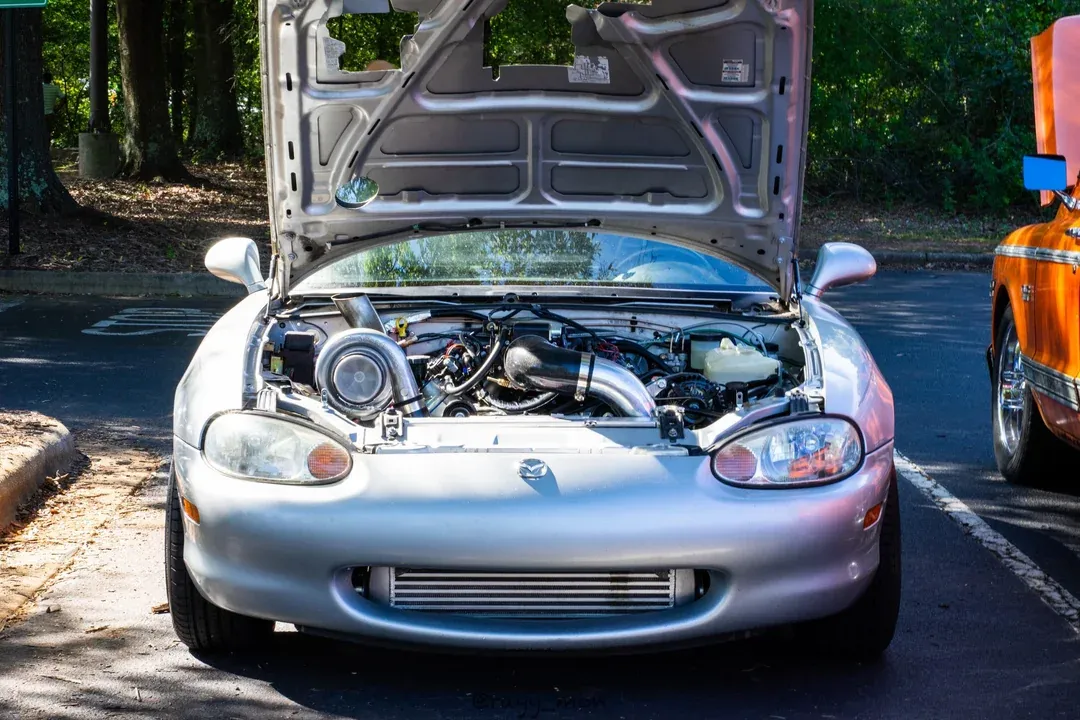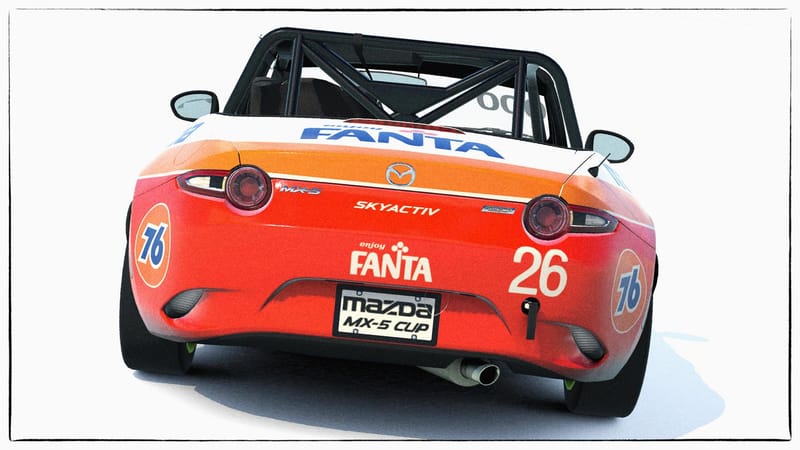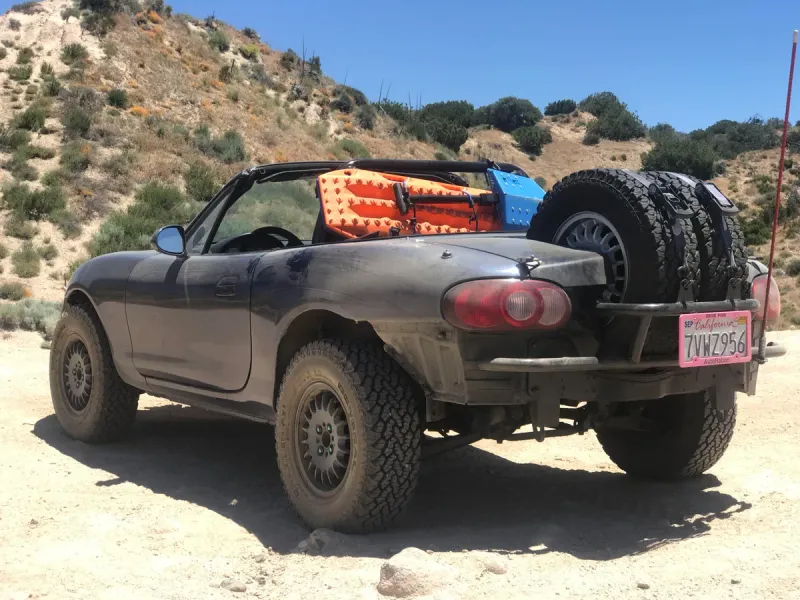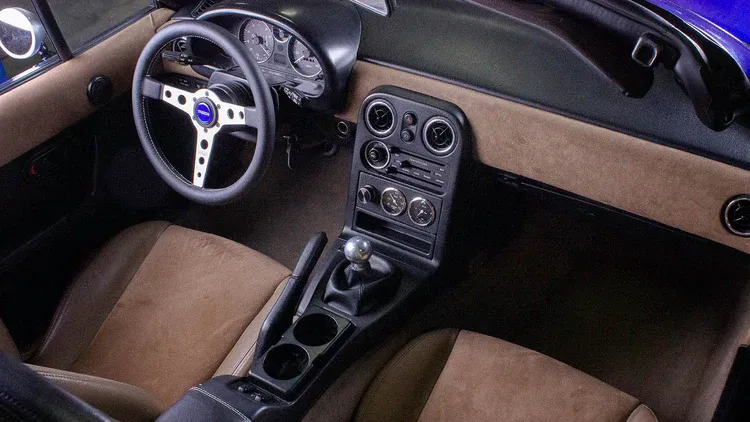I Just Turbocharged my Miata, What now?
Just boosted your Miata? Now it’s time to ensure reliability. From priming your turbo and tuning for safe power to daily driving habits and essential maintenance, this guide covers everything you need to keep your turbo Miata running strong. Learn the must-dos and avoid costly mistakes

The Miata’s known for its brilliant handling, but when you’re chasing down cars with twice your horsepower, you can’t help wanting a little extra punch. Once you get around into bolting on a turbo kit on your Miata, it will feel like unveiling a brand-new version of your beloved roadster. Suddenly, it transformed from a playful puppy into a turbocharged terrier, still playful, but ready to get serious.
Of course, more power comes with more responsibility. A turbo setup cranks up the stress on your engine in ways a naturally aspirated setup never does. And because of that, many new turbo owners think they can skip steps like priming the turbo or properly tuning the engine. Trust me, that’s a quick path to a blown motor or a damaged turbo.
This guide covers the early post-install routine, everything from priming the turbo and checking for leaks to easing into a proper break-in. We’ll also talk about tuning (the real heart of any forced-induction setup), plus daily driving habits and must-do maintenance. Finally, we'll point out common pitfalls that can wreck your turbocharged engine. Ready to keep that boost rolling?
Turbo Basics & Key Differences From N/A Engines
A turbocharger is essentially an air pump driven by your exhaust gases. As hot exhaust exits the engine, it spins a turbine wheel. That turbine wheel is connected to a compressor wheel, which sucks in fresh air and forces it into your engine at higher pressure. More air means a bigger bang in each combustion cycle, which translates to greater horsepower and torque.
On a Miata, this boost in power is particularly noticeable because the car is so light. You don’t need big horsepower numbers to feel a world of difference on the road or track. However, turbocharging also raises cylinder pressures and increases heat, which can place more strain on internal components like pistons, rods, and head gaskets. That means you’ll want to be extra careful about maintaining oil quality, coolant levels, and overall engine health.

Immediate Post-Install Checklist
Once you’ve bolted everything together, resist the urge to immediately fire it up and go for a test drive. The first thing to get right is “clocking” the turbo. This means adjusting the compressor and turbine housings so that your oil feed line is on top, allowing gravity to assist with oil drainage. Misalignment here can lead to poor lubrication and a short-lived turbo.
Next, confirm the oil feed and coolant lines are routed properly. The oil feed line should ideally be as vertical as possible for consistent flow. If your turbo is water-cooled, inspect the coolant lines for any kinks or weak clamps. A leak or pinched line might not seem like a big deal now, but it can ruin your brand-new turbo if left unchecked.
Before you start the engine for real, you need to “prime” the turbo. This involves pouring a bit of oil directly into the oil inlet port on the turbo. Then, disable ignition or fuel (usually by pulling the corresponding fuse) and crank the engine in short bursts, about 10 to 20 seconds. Watch the oil drain line to ensure oil is actually making it to the turbo. This small task can save you big money and frustration because a dry turbo on first startup can quickly damage the bearings. After priming, double-check your engine oil level, coolant, and all your boost and vacuum lines for leaks or loose connections.
The First Startup & Break-In Procedure
Once everything is buttoned up, it’s time for the moment of truth: that first startup. Put any fuses you pulled back in place, start the engine, and let it idle. Stay attentive, listen for any squealing, grinding, or loud knocking sounds. If something seems off, shut it down and investigate. Some light smoke isn’t unusual, especially if there’s residual oil on the turbo or pipes, but continuous thick smoke usually indicates a leak.
For your first gentle drive, aim to stay below 3,000 to 4,000 RPM, avoiding full boost. Give the car a few miles to heat up, then bring it back and inspect everything again, oil feed lines, coolant hoses, turbo fittings. Heat cycles can reveal issues that didn’t show up when the engine was cold. As for break-in, most modern turbos don’t require an extensive break-in period. However, if you have a rebuilt turbo or newly forged engine internals, follow the recommended procedure from the rebuilder. Better safe than sorry.

Tuning
Tuning might be the single most important factor in making your boosted Miata a long-term success. A turbo drastically changes how your engine consumes air and fuel, and if your ECU can’t compensate, you risk running lean and detonating, which can blow your engine. A solid tune optimizes fueling, timing, and boost control to keep your engine safe and powerful.
You can go the mail-order or “base tune” route if you just need to get to a professional tuner without damaging anything. Just stay out of boost as much as possible on the way there. A full dyno tune is your best bet for reliable performance because the tuner can tailor your air-fuel ratio, timing, and boost levels to your specific setup. If you’re nervous about even a short drive on a questionable tune, consider renting a trailer to get the car to the shop. That’s a lot cheaper than replacing an engine.
After your tune, keep an eye on your setup. If your ECU supports data logging, do occasional checks on your air-fuel ratios, knock activity, and boost levels. Make sure you know what boost pressure your tuner dialed in, and don’t exceed it just because you’re feeling adventurous. Turning up the boost without supporting fuel mods or a revised tune can spell disaster.
Daily Usage & Driving Habits
Driving a turbocharged Miata day to day is a blast, but you should adopt a few new habits. Start by giving your engine about 30 seconds to a minute of idle time in the morning, particularly when it’s cold outside. This helps the oil circulate before you load up the turbo. After a fun drive or a highway pull, let the car idle for another 30 to 60 seconds to let the turbo cool off. If you shut the car off immediately after a high-load run, the oil can “cook” onto the turbo’s bearings and shorten their life.
Fuel quality is another big factor. Your tuner probably recommended 91–93 octane, so stick to that. Using regular gas or poor-quality fuel can lead to knocking under boost, and knock is an engine killer. If your Miata has a stop-start system (rare, but possible with certain aftermarket ECUs), think about disabling it if you do a lot of short, high-load driving. Repeatedly cutting the engine can reduce oil flow to the turbo at moments it needs cooling.

When you’re on the road, get used to downshifting before punching the throttle for an overtake. Relying solely on the turbo surge can place sudden strain on your engine internals. Downshifting helps your engine spin up more smoothly and gives you a more controlled boost response, plus it’s more fun to row through gears in a Miata anyway.
Maintenance Essentials
Once you go turbo, your maintenance schedule needs a little extra attention. Oil changes are crucial. The turbo generates a lot of heat, which can break down oil faster. Depending on how you drive, you should change the oil every 3,500 to 5,000 miles, or even sooner if you’re hitting track days. High-quality synthetic oil is a must, don’t skimp here.
For coolant, plan on flushing it at least every year or two. Turbocharged engines run hotter, and a beefy radiator or upgraded fans can help handle that extra heat. Keep your air filter clean, if you’re using an oiled filter, check your mass airflow sensor (if you have one) for any residue buildup.
Periodically do a boost leak or vacuum leak test to catch any small leaks before they become big problems. A leak can cause poor performance, weird idle behavior, or even engine damage if your fueling goes off. Finally, check your spark plugs regularly. Turbo cars often run a colder plug range, and those plugs can wear out faster under higher cylinder pressures.
Potential “Next Mods” for Longevity & Performance
Once you’ve got a taste for boost, you might be tempted to push for more power. If you do, consider upgrading your intercooler. A small or inefficient intercooler can get heat-soaked, making your intake temps skyrocket and reducing performance. A bigger or better-designed front-mount unit solves that.
On the exhaust side, a free-flowing downpipe and cat-back system will help the turbo spool more efficiently and reduce backpressure. Just make sure you’re not violating any emissions or noise regulations. If you plan on tracking your Miata or going above 250 wheel horsepower, you might also think about forged pistons, rods, and an upgraded clutch. Stock internals can only handle so much stress.
Finally, don’t forget about gauges. A wideband O2 gauge is practically mandatory for keeping tabs on your air-fuel ratio, and a boost gauge helps you notice any spiking or creep. Oil pressure and oil temp gauges are great for monitoring engine health, spotting lubrication or overheating issues before they become catastrophic.

Troubleshooting & Common Pitfalls
You’ll likely run into a few speed bumps (pun intended) as you learn the ins and outs of your turbo setup. Blue smoke, for example, could mean your turbo is having oil drain issues or the seals are starting to go. Overheating might be due to a lackluster radiator, weak fans, or a stuck thermostat. Keep a close eye on your temperature gauge in traffic or on hot track days.
Knock or detonation can sound like marbles rattling in a can. If you ever hear it, back off the throttle and get your tune checked. Sometimes, upgrading to higher-octane fuel temporarily helps, but the real cure is a proper tune. Boost creep or boost spikes happen when your wastegate can’t control exhaust flow effectively. Solutions might include porting your wastegate or swapping to an external wastegate system.
Turbocharging a Miata is one of the most rewarding car projects you can take on. The extra power adds a jolt of excitement every time you press the accelerator. But with that excitement comes a need for extra care: warm-up and cool-down routines, more frequent fluid changes, and a watchful eye on your tune. If you stay on top of maintenance and respect your car’s new capabilities, your boosted Miata will reward you with countless smiles per mile.
Remember, always use high-quality oil and premium fuel, get a proper tune, and regularly inspect for leaks or worn parts. If you have questions or experiences with your own turbo Miata, feel free to share them, there’s a huge community out there swapping tips and stories. In the meantime, enjoy that sweet sound of spool and stay safe on the roads. With the right care, your turbocharged Miata will keep you grinning from ear to ear for years to come!
If you want to dig deeper, head over to MiataTurbo.net or other Miata forums and social media groups dedicated to forced induction. You’ll find plenty of firsthand advice, from recommended local tuners to parts suppliers. Keep handy a few DIY tools, like a compression tester, a boost leak tester, and an OBD-II scanner for reading trouble codes.
FAQ
“Can I drive my freshly turbocharged Miata without a tune?” Technically, yes, but only with minimal throttle and ideally short distances. It’s still risky.
“What if I hear faint whistling or whirring?” Some turbo whine is normal, but loud grinding is not. Investigate ASAP if it sounds metallic.
“Do I need forged internals for low boost?” Most stock Miata engines handle moderate boost (6–8 psi) pretty well. If you’re aiming higher or tracking regularly, consider stronger internals.
Stay boosted, have fun, and let that Miata grin keep shining, there’s nothing like hearing that turbo spool up on a crisp morning drive!




